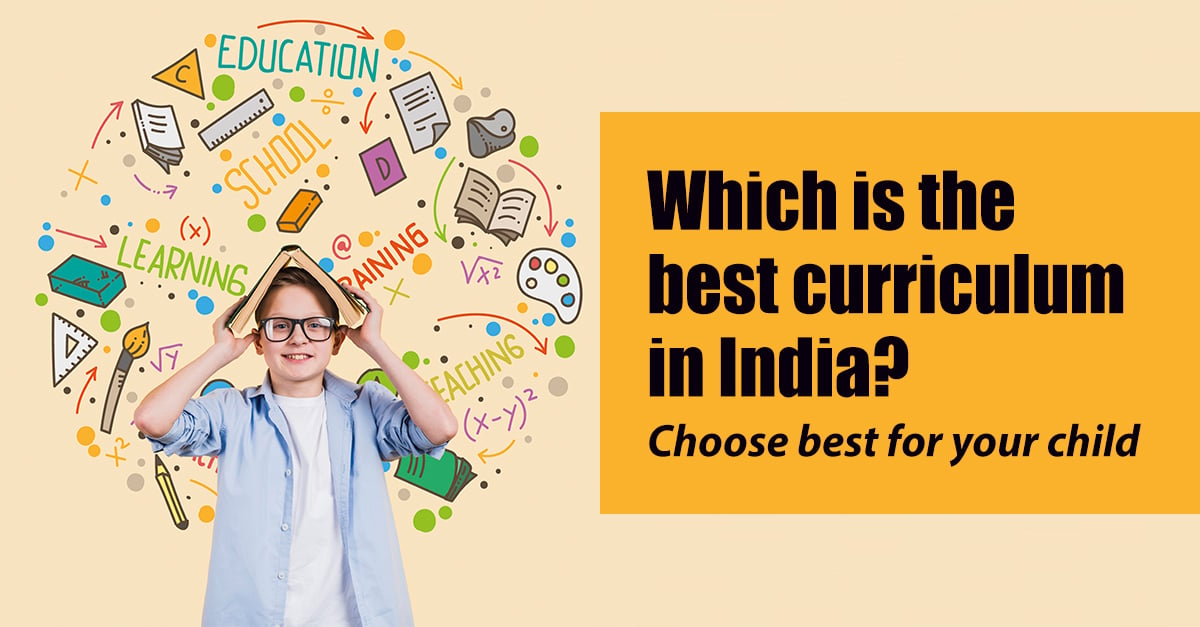As parents providing the best education for your child will be your top priority. When you have a plethora of options to choose from, naturally you are confused about which curriculum suits your child the best. If you are thinking about knowing more about the types of curriculums in India, what are their pros and cons, then here is the content that you are looking for. Hope it will help in your decision to choose the right curriculum for your child.
1. State Boards: This is the highly preferred curriculum by a large number of parents in India. A study conducted by the government stated that 88% of students in India are pursuing their education in State Boards.
Advantages:
- ● This curriculum is custom-made according to the needs of states, highlighting its rich customs, traditions & languages.
- ● Compared to the other curriculums, State boards are preferably affordable.
- ● In the State boards, greater emphasis is given to the state languages, where students have the opportunity to learn in their regional language medium.
Disadvantages:
- ● Every state has its own regional disparities, as a different state has different mediums of schools thus, they lack uniformity.
- ● State board certificates may not hold the same value and recognition as a CBSE or an ICSE.
2. Central Board of Secondary Education (CBSE): These are the next popular preferred school curriculum. Nearly 12% of Indian Students are pursuing their education in CBSE schools.
Advantages:
- ● This curriculum is nationally recognized and has a uniform system in the curriculum across the country.
- ● They give more emphasis on subjects like Mathematics and Science and competitive exams like JEE, NEET, and AIIMS.
Disadvantages:
- ● This can be rigorous and highly competitive for the students.
- ● The most famous accusation on the CBSE curriculum is it promotes rote learning and does not leave much room for critical thinking.
3. Indian Certificate of Secondary education (ICSE): This curriculum is recently popular among Indians. At present, there are approximately 2,807 schools in India that follow the ICSE Curriculum.
Pros:
- ● The curriculum is comprehensive and covers a wide range of subjects.
- ● They concentrate on higher proficiency in the English language.
- ● The students are encouraged to take part in extracurricular activities like drama, dancing, debate, and sports activities.
Cons:
- ● Students might find it overwhelming to study a wide range of subjects.
- ● They might struggle to juggle projects, extracurricular activities, and studies all at the same time.
- ● ICSE is not as common as CBSE. Hence there is a chance you might not find an ICSE school in your area. Or the one you have in the area might be too far.
4. International Baccalaureate (IB): This is the latest and lesser-known school curriculum. In the whole of India, there are only 141 schools that offer this curriculum. Most notable schools with International Baccalaureate curricula are in metropolitan cities like Bangalore, Mumbai, and Hyderabad.
Advantages:
- ● This curriculum is globally recognized and also known for rigorous academic standards.
- ● This curriculum is more based on Inquiry-based learning and always encourages the students to ask critical questions.
- ● They also emphasize holistic development and hence extracurricular activities and community service are well encouraged.
Disadvantages:
- ● It is one of the most expensive school curriculums.
- ● Since only a handful of schools follow this curriculum, these schools are largely found in urban areas.
- ● Students may find the workload grueling, to make enough room for the variety of assignments, projects, sports, cultural activities, and much more.
- ● The schools with this curriculum usually have limited seats available. Hence parents may have to book the seats beforehand or students should be good at balancing academics and extracurricular activities.
5. National Institute of Open Schooling (NIOS): This curriculum was established in India in November 1989 by the Ministry of Education as the National Open School (NOS). NIOS caters education to a diverse group of learners who are not able to attend school regularly. It operates throughout India and abroad with departments, regional centers, and accredited schools. NIOS has also collaborated with reputed Institutions such as C Commonwealth of Learning (COL) And UNESCO to increase the literacy rate in rural India.
Advantages:
- ● This curriculum is flexible for those who cannot afford to attend school daily due to various personal or medical reasons.
- ● Allows the students to learn at their own pace.
- ● This curriculum is recognized by the government itself, hence it is as authentic as the rest of the curriculums.
Disadvantages:
- ● There is always a stigma surrounding by this type of curriculum in the minds of the people of the society since it does not require students to physically attend the classes regularly.
- ● It does not have much scope for extracurricular activities.
- ● Since students are not physically attending school regularly there is no much social interaction amongst the students.
Ultimately it is we parents who are responsible for helping the future of our children. Hence when we are choosing a curriculum for our children, we should be mindful of their ambitions, learning abilities, interests, and future goals. Each of the curricula mentioned above is unique from one another and has its own merits and demerits to consider. Multiple times changing the curriculum of the children will make children confused and lost. Hence check in with the schools that align with your thoughts and children’s ambitions so that your children can have a very successful future.


Comments